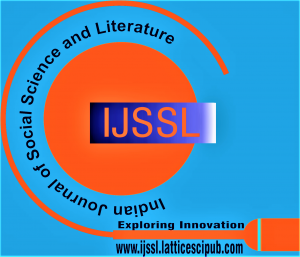![]()
Disabled or Differently-Abled: A Reading on Disability in A Song of ICE and Fire
Hudha Ahmed Kutty K V
Hudha Ahmed Kutty K V, Research Scholar, Department of English, Sree Sankaracharya University of Sanskrit, Kalady (Kerala), India.
Manuscript received on 20 August 2022 | Revised Manuscript received on 03 September 2022 | Manuscript Accepted on 15 September 2022 | Manuscript published on 30 September 2022 | PP: 37-41 | Volume-2 Issue-1, September 2022 | Retrieval Number: 100.1/ijssl.A1031092122 | DOI: 10.54105/ijssl.A1031.092122
Open Access | Ethics and Policies | Cite | Mendeley | Indexing and Abstracting
© The Authors. Published by Lattice Science Publication (LSP). This is an open-access article under the CC-BY-NC-ND license (http://creativecommons.org/licenses/by-nc-nd/4.0/)
Abstract: To analyze if the inclusion and exclusion system in our society is fair. A few bodies born with a different design, unlike the majority are brought under the category of the ‘disabled.’ It has been a human tendency from time immemorial to keep such people hidden or shied away. Such individuals are devoid of the daily lifestyle of the ordinary people. This isolation leaves a great impact on the physical and mental growth of the individual resulting in further damages in the personality. Socialization becomes lesser or completely barred. Hence such individuals are born, live and die in seclusion. The human inclination of stereotyping them has always resulted in the denial of their rights. Martin creates a reflection of society with many disabled characters and how they are treated. The central characters like Bran, Tyrion and Jamie and others as Varys, Hodor, Maester Aemon, Shireen, Patch face, Ghost etc. all are with limited biological functions and are treated differently. In the present paper, the researcher makes a study on this attitude of the society and weigh the justification for the same. Ironically, almost all these characters prove to have their own ingenuity in their lives. Some even prove to be abler than their respective counterparts. So, the question is “should they be kept in seclusion?” Can the inclination of the world to isolate them be justified? Does the world belong only to the majority “Normals?” This paper concludes that it is not. The world cannot be complete without them as it possesses a heterogenous population demanding equal inclusion of every category.
Keywords: Disability, Inclusion, Rights, Seclusion, Socialization
Scope of the Article: Disability Studies
